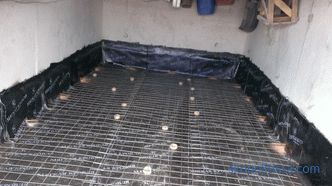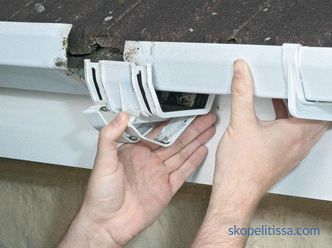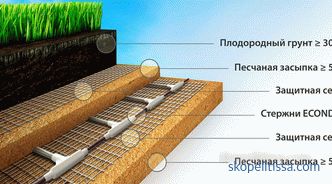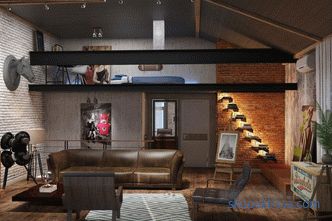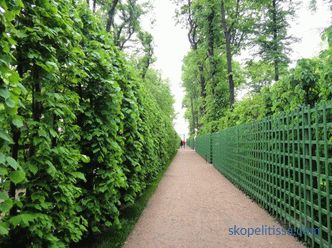In this article we will talk about the modern solution for creating a solid foundation in the garage. To choose a self-leveling floor for a garage correctly, it is worth examining the materials offered in the market, comparing their characteristics, advantages and disadvantages, as well as ways of laying. Depending on the operating conditions of the premises and the climate zone of the region, materials are selected that have relevant characteristics and properties.
Requirements for flooring in the garage
Choosing the material to create a garage the following requirements should be taken into account:
-
Abrasion resistance and compressive strength. The weight of the machine is quite large and is distributed on four wheels, in addition, the tire tread abrasively acts on the surface, abrading it.
-
Inertness to chemicals, resistance to mechanical effects and impacts. Often the garage is used not only for storing cars, but also as a workshop.
-
Frost and atmospheric resistance. Significant temperature drops can cause cracking and destroy the base. It is important to choose compounds that will have resistance to low temperature conditions.
-
Easily cleaned of dirt, because there are a lot of substances in the garage that leave marks on the floor.
To create a self-leveling floor, various options on the market. It is important to understand their varieties and features.
A variety of self-leveling floors that can be used in the garage
Any of the types of floor covering offered below has a monolithic appearance without seams and joints, as well as a long service life, so it’s hard to say which is the best floor for garage:
-
Epoxy self-leveling floors. Very well tolerate exposure to temperature and moisture. There are both in one and in a two-component version. In addition, they have chemical inertness.
-
Polyurethane floors. Similar in their characteristics to the previous version, but more resistant to mechanical stress. Used in automotive companies.
-
Methyl methacrylate coatings. They should be used in rooms with good ventilation. Possess low cost. However, you need to properly select the thickness of the coating so that it does not peel off and wear out in a short period of time.
-
Acrylic / cement mixes for floors. They make it possible to protect concrete foundations from destruction and to repair cracks in old floors.
The advantages and disadvantages of self-leveling floors
Like any building materials, these also have a number of advantages and disadvantages. Polymer floors for the garage have the following advantages:
-
High strength and long-term use (about 20-40 years). Not afraid of mechanical damage and shock.
-
Good adhesion to the base. When applied, the coating adheres firmly to the base and does not peel off.
-
Fire resistance. Do not burn when in contact with fire and do not emit toxic substances into the atmosphere.
-
Good protection against moisture. Protect from penetration of water to the concrete base.
-
Attractive appearance. The composition is made in various colors, you can add flocks and glitters and get intricate designs and unexpected effects.
-
Seamless. This option eliminates the ingress of moisture and dirt, which destroys the coating.
The disadvantages of polymeric self-leveling floors for the garage are the difficulty of preparation and installation, the inability to dismantle them without damage, the high cost.
The technology of applying self-leveling floors in the garage
There is a possibility to make a self-leveling floor in the garage in several stages: preparation of the base, preparation of the mixture, pouring of the composition, application of the finishing layer.
Preparatory stage of the work
Grounding the polymer The floor is a concrete screed. To begin with, it is cleaned of dust and residues of glue, varnishes or paints, since they will worsen the adhesion of the solution to the base. The protruding sections are polished, the cracks are embroidered, and then filled with repair compounds. The surface cleared of dust and dirt is primed.
If you need to fill in a thick layer or create a slope, you need to make marks on the walls with a marker using a laser level. When pouring the floor in a room that will not be heated, it is worth using a damper tape or foamed polyethylene around the perimeter.
On our site you can familiarize yourself with the most popular areas in the Moscow Region for the construction of a country house.In filters you can set the desired direction, the presence of gas, water, electricity and other communications.
Preparation of the priming mixture
Water is poured into the prepared container in an amount that corresponds to the instructions on the packaging of the material. The dry mix is gradually introduced and mixed by the construction mixer. After 10 minutes, stirring is repeated, after which the mixture is ready for use. It needs to be developed for half an hour, otherwise it will lose its elasticity and will not spread evenly in the plane.
The process of pouring the prepared composition
The main feature of the floor device in the garage is that you need to do a certain bias. In this regard, the composition must be kneaded more dense than when pouring the usual self-leveling floor. You need to start work from the far corner and move in the direction of the exit. The resulting mixture is poured and smoothed, then rolled with a needle roller to compact. The next portion is overlapped with the previous one. Be sure to do deaeration of the entire coating.
If the room has a large size, which is more than 18 square meters. area, you will need to make expansion joints. After a week or two, the floor is ready for finishing and the final stage of processing.
Laying the finishing decorative and protective layer
To begin with, the surface is examined, all irregularities of sandpaper are removed and dust is well removed. A hardener is added to the epoxy paint, mixed and allowed to stand for 30-60 minutes. It is necessary that all chemical reactions are over. It is necessary to begin coloring from corners, carefully promazyvaya them, then with the help of the roller paint over all perimeter of a floor. To reduce the surface slip, sprinkle decorative chips over the entire area. After 3-6 days you can use the floor.
A wide variety of materials allows you to get different surface options and create a unique pattern or choose the appropriate color. There are options when mixing several colors or using additional additives to reduce slippage or create a specific design.
It can be interesting! In the article on the following link, read about how to insulate the floor in a private house: the secrets of thermal insulation.
What materials can be used to create a self-leveling floor?
If we are talking about a filling field for a garage, which one is better to choose, then the following characteristics should be taken into account. The coating must be durable and resistant to moisture and temperature, and also inert to chemical environments. Such surfaces are created in two layers.
The first layer is a mixture for outdoor work based on cement. Among the world famous brands are Ceresit and Bergauf. It is worth paying attention to products such as Ceresit CN76, Bergauf Boden Street and so on. These compounds are recommended for use in basements, industrial workshops, garages and terraces. Using self-leveling compounds, you can level the concrete base and prepare the floor to fill the next layer. Sometimes the surface is left in this form, however, in order to increase its strength, a second layer is applied, which is called finishing.
The second layer is performed using epoxy coating. Produce these compounds manufacturers that specialize in this type of coating: Epoxy Shield, Eneklad SFS. The surface is durable and able to withstand heavy loads. The choice is up to the consumer. It is worth paying attention to the characteristics of the material and the requirements that it must meet, based on the conditions of operation of the room.
From the video you can learn how to make a self-leveling floor:
This can be interesting! In the article on the following link read about the underground garage in the style of James Bond.
Conclusion
Self-leveling floors have a long period of use and are easily repaired in case of damage to the surface. Properly selected material will provide an ideal surface resistant to mechanical stress, as well as capable of withstanding temperature fluctuations and high humidity. All these characteristics make the self-leveling polymer floor popular with consumers. The relatively high cost is offset by the duration of use and high performance.
